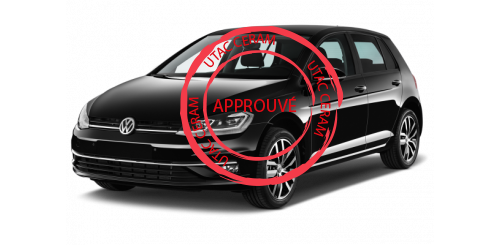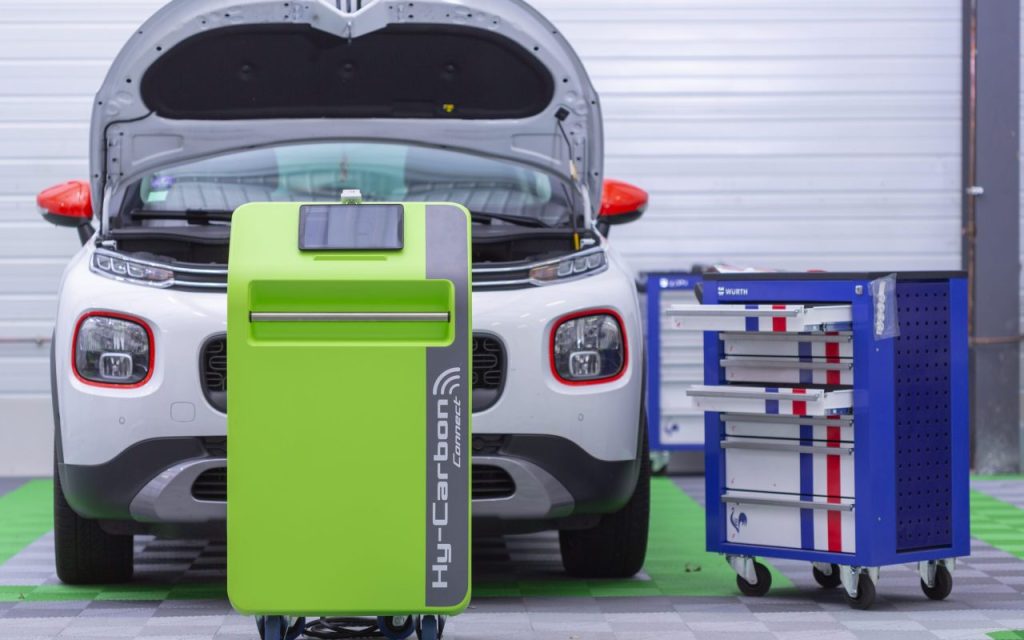The different analyses
Hydrogen descaling –
effective on all types of engines
FlexFuel Energy Development is committed to providing a guaranteed chemical-additive-free solution to the problems of pollutants released by combustion engines. We have carried out tests and demonstrated the effectiveness of our products in a perfectly operational way
Hydrogen descaling – efficiency in numbers
| Before descaling | After descaling |
| CO2 141.04 g/km | CO2 139.85 g/km |
| CO 197.8 mg/km | CO 168.8mg/km |
| HC 35.84 ppm | HC 28.19 ppm |
| NOx 18.41 ppm | NOx 18.02 ppm |
| PN 2.32E+12 | PN 3,3E+11 |


| Before | After |
| CO2 1.35 g/km | CO2 0.23 g/km |
| CO 0.005 mg/km | CO 0.002 mg/km |
| HC 2 ppm | HC 0 ppm |
| NOx 205 ppm | NOx 172 ppm |
| Power 53.8 ppm | Power 55.8 ppm |
| Torque 261.2 ppm | Torque 268.8 ppm |

| Before | After |
| CO2 1.78 g/km |
CO2 1.53 g/km |
| CO 0.02 mg/km |
CO 0.02 mg/km |
| HC 4.9 ppm |
HC 1.13 ppm |
| NOx 48.62 ppm |
NOx 41.23 ppm |
| Power 53.8 ppm |
Power 55.8 ppm |
| Torque 261.2 ppm |
Torque 268.8 ppm |

| Before | After |
| Power 103.7 HP |
Power 108 HP |
| Poor fuel flow regulation | Settled |
| Incorrect boost pressure | Settled |
| Before | After |
| Power 75 HP |
Power 77.5 HP |
| CT refused Opacity 5.98m-1 |
CT accepted Opacity 1.25m-1 |
Descaling analyses on different types of vehicles

| Result after descaling | |||
| Vehicle | HC | NOX | CO |
| Renault Clio | -77% | -15% | N/A |
| Ford C-Max | -66.34% | -10.22% | -50% |
| Renault Laguna | -40% | -12.09% | -86.36% |
| Renault Mégane 1 | -10.52% | -36.75% | -12.50% |
| Citroën DS3 Racing | -40.85% | -21.86% | -100% |
| BMW X 3I | -19.13% | -4.45% | -40% |
| Renault Scénic III | -87% | -7% | -20% |
| Ford Mondeo Estate | -53.03% | -64.96% | -100% |
Here is an average of the levels of unburned hydrocarbons (HC), nitrogen oxides (NOx) and carbon monoxide (CO) after hydrogen descaling based on 8 analyses of light commercial vehicles.

| Result after descaling | |||
| Vehicle | HC | Nox | CO |
| Ford Transit | -99,08% | -49,37% | -100% |
| Peugeot Boxer | N/A | -4,62% | -100% |
| Citroën Jumper | N/A | -15,48% | -51,85% |
| Mercedes Sprinter | -53,83% | -20,16% | N/A |
| Renault Master | -8,98% | -28,58% | -25% |
| Renault Master | -50% | -4,39% | -25% |
| ISUZU Trucks | -66,67% | -20,73% | -50% |
| Renault Trafic | 100% | -91,67% | -96,72% |
As we can see, we are on a decrease of 63.09% on average for HC (unburned hydrocarbons), 20.37% for NOx (nitrogen oxides) and 64.08% for CO (carbon monoxide) which shows an improvement in the health of engines after hydrogen descaling.
N/A: Not Significant

| Result after descaling | |||
| Vehicle | HC | NOX | CO |
| Renault Midlum | -50% | -5.38% | -55.56 |
| Renault Premium | -100% | -15% | -100% |
| Renault D Range | -66.46% | -78.56% | -2% |
| Renault 220 XDI | -2.3% | -79.65% | -28% |
| Man tow truck | -50% | -34.45% | -50% |
| Renault Midliner | -79% | -58% | -21% |
| Irisbus Agora | -97% | -65% | N/A |
| Heuliez GX 317 | -100% | -62% | N/A |
Not significant
This analysis was made on one of the Bateaux Vedettes de Paris.
| Port | |
| Before descaling | After descaling |
| O2 19% |
O2 19.50% |
| CO2 1.28% |
CO2 0.88% |
| CO 0.01% | CO 0% |
| HC 5.54 ppm | HC 3.29 ppm |
| NOx 153.55 ppm |
NOx 64.67 ppm |
| Starboard | |
| Before descaling | After descaling |
| O2 19.10% | O2 18.62% |
| CO2 1.50% | CO2 1.18% |
| CO 0.01% | CO 0.01% |
| HC 5.31 ppm | HC 4.87 ppm |
| NOx 114.28 ppm | NOx 73.88 ppm |
